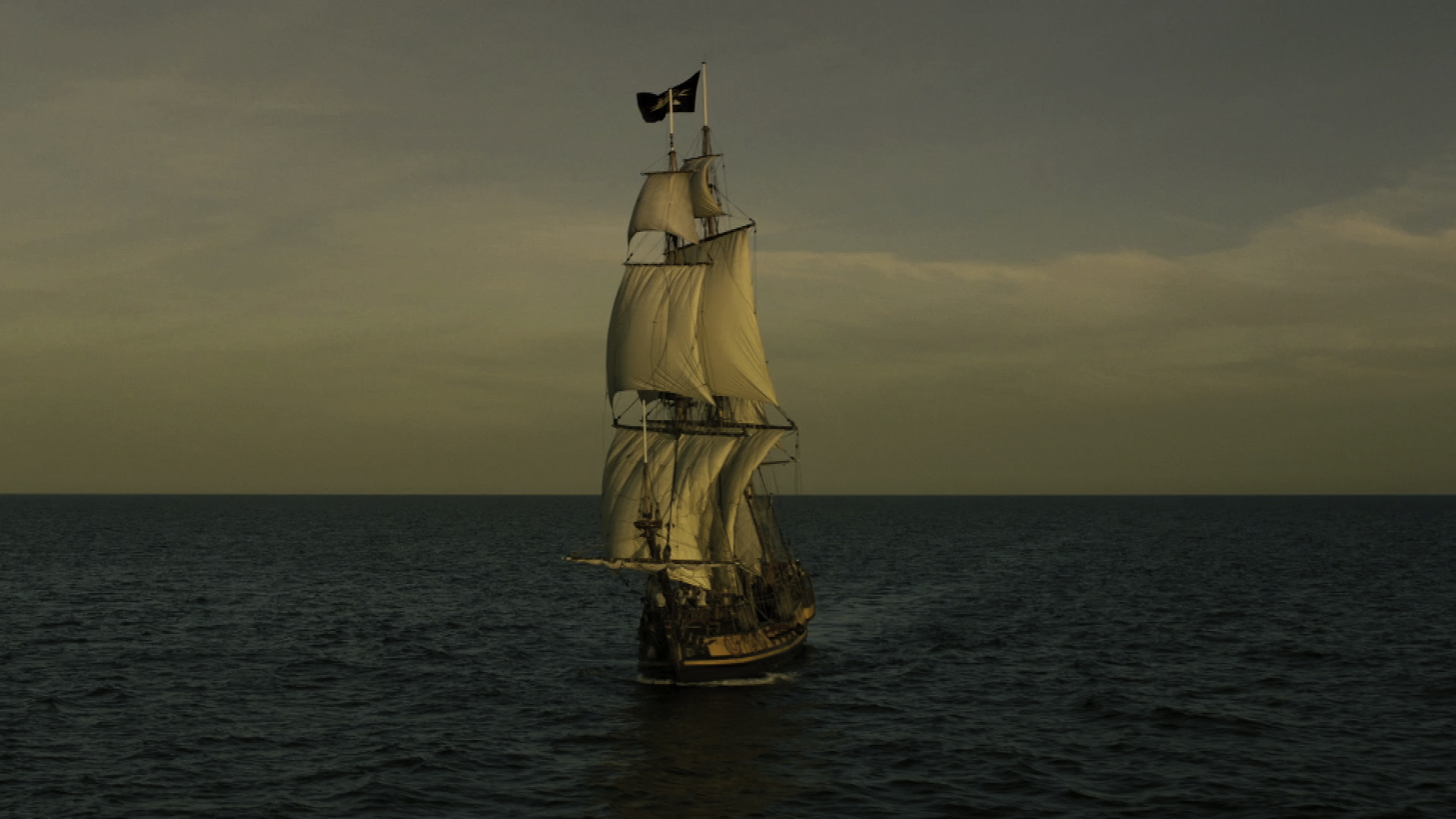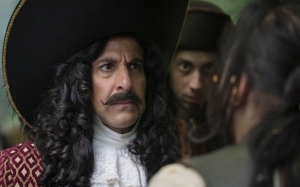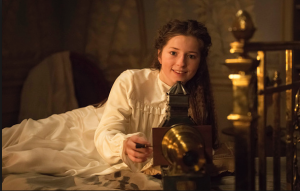 |
|
| GERSH •
LOS ANGELES bhalperin@gersh.com DENCH ARNOLD • LONDON mac@dencharnold.com |
|
| O-1 US Work Visa + Union, Fluent in French + Dutch |
| FILM + TV DRAMA |
|
CINEMATOG BLOG | |||
| COMMERCIALS | |||||
| CINEMATOG BLOG | |||||
| TRAVELS WITH MY CAMERA | |||||
| CONTACT | |||||
|
“Peter and Wendy” Q and A about the look and cinematography. Bandwidth 2015. |
 Discussion
with Director of Photography, Tony Miller BSC about his work on “Peter
and Wendy” 2015, a film for TV and theatrical release, with Stanley
Tucci, Paloma Faith and Laura Frazer. Discussion
with Director of Photography, Tony Miller BSC about his work on “Peter
and Wendy” 2015, a film for TV and theatrical release, with Stanley
Tucci, Paloma Faith and Laura Frazer. What attracted you to the project? Since I was a child, I have always loved the Peter Pan story and identified with the independent, adventuring character of Peter Pan who never wanted to grow up! What could be better for a cinematographer – three distinctly different worlds to imagine and light. The fact that the project was based in Great Ormond Street Hospital and about a sick child, made this story even more poignant and relevant today. On a personal level especially so, as my daughter Ava was being diagnosed and treated with epilepsy at the very same time (at Great Ormond Street). I really lived part of the drama, at the heart of the film. We knew that the Disney epic, “Pan”, directed by Joe Wright was being released just before us and that our modest film had to be very different. The hospital story gave our version a new relevance, a modern context and a secondary narrative. How did you approach the project visually?  Unlike
the other Pan project, we had a very limited budget of just over €7
million and it meant that we could only afford a certain amount of
CGI work. Whatever we could shoot as live action, (without the aid
of green screen etc.) we had to do. With director Diarmuid Lawrence,
writer Adrian Hodges and also the production designer Alison Riva,
we crafted a world that existed in the mind of the child – in
her imagination. And so we had a very expressionist point of departure. Unlike
the other Pan project, we had a very limited budget of just over €7
million and it meant that we could only afford a certain amount of
CGI work. Whatever we could shoot as live action, (without the aid
of green screen etc.) we had to do. With director Diarmuid Lawrence,
writer Adrian Hodges and also the production designer Alison Riva,
we crafted a world that existed in the mind of the child – in
her imagination. And so we had a very expressionist point of departure.My initial influences were the films of the Brothers Quay, (whom I have worked with quite a bit), for their surreal exploration of the subconscious in imagery, the stunning boat sequences of Peter Weir’s “Master and Commander” for the pirate ship work and strangely the hospital scenes of “One Flew Over the Cuckoos Nest”, which were the antithesis of modern hospital dramas. Lastly, “The Diving Bell and the Butterfly” for the aesthetic and visceral cinematography (the great Janusz Kaminski ASC), that at all times accessed the experience of being ill. We wanted to create a world where we start in a very real hospital environment, identified as Great Ormond Street. In fact, the opening shots are filmed there. We wanted to avoid the imagery of the many TV hospital shows and anything theatrical. We then gradually move to an imaginary world, through the reading of the Peter Pan story. What did you shoot the film on and why?  As
it was a hybrid film/TV project, the obvious ratio was 1:185-1. We
shot on two Alexa Plus’s, usually single camera, with a permanent
Steadicam on hand. As
it was a hybrid film/TV project, the obvious ratio was 1:185-1. We
shot on two Alexa Plus’s, usually single camera, with a permanent
Steadicam on hand. For lenses (after much testing), I decided to shoot on Cooke S4i’s for the hospital scenes and all the real day sequences and go with Super Baltar (Bausch and Lomb) vintage lenses for the expressionist pirate/imaginary world. These lenses were used on the two 1970’s “Godfather” films and have an amazing quality to them. They drop off more on the edges and are softer than the Cooke’s, and also a bit colder. With the harder digital sensors, they give you a gentler look. It is a choice that worked out very well and helped us to subtly create a distinction between the two worlds – the modern and the period. Instead of diffusion, I used quite a lot of atmospheric smoke – outside in all the forest scenes and inside, on most of the period sets. I thought the underwater sequences were particularly stunning. How did you manage those?  We
had a crazy three-day shoot in the Warner Brothers Tank at Leavsden
Studios, where the Harry Potter films were shot. We had far too much
to shoot and with children underwater, we had major safety issues
to conform to. I have shot a lot underwater over the years, but for
this brought in an underwater operator, Tim Wooster, as I had my hands
full, going between the technocrane and underwater camera, as well
as lighting both environments. Tim did a brilliant job, and also shot
the aerials of the pirate boat at sea, off the Cornish coast. We
had a crazy three-day shoot in the Warner Brothers Tank at Leavsden
Studios, where the Harry Potter films were shot. We had far too much
to shoot and with children underwater, we had major safety issues
to conform to. I have shot a lot underwater over the years, but for
this brought in an underwater operator, Tim Wooster, as I had my hands
full, going between the technocrane and underwater camera, as well
as lighting both environments. Tim did a brilliant job, and also shot
the aerials of the pirate boat at sea, off the Cornish coast.In the minds of the children – the underwater world symbolised their freedom from illness. We were trying to create a subconscious, hybrid imaginary world that acts as a link between the operating theatre and the Neverland world. Working with children for most of the shoot must have had its challenges?  The
kids were the stars of the show. I was amazed to see how this ensemble
coped with the difficulties of working at sea, underwater in a tank
and in a forest in Luxembourg. Stewart McKinnon and Christian Baute,
our wise Producers, decided from the start to embrace all the parents
and welcome them on set and largely do away with chaperones. So we
all became a very close company. Stewart made the children (on and
off the set), the center of the film. For many this was their first
acting gig. But they were often more professional than our older adult
actors! I can not think of a more enjoyable shoot in fact. The
kids were the stars of the show. I was amazed to see how this ensemble
coped with the difficulties of working at sea, underwater in a tank
and in a forest in Luxembourg. Stewart McKinnon and Christian Baute,
our wise Producers, decided from the start to embrace all the parents
and welcome them on set and largely do away with chaperones. So we
all became a very close company. Stewart made the children (on and
off the set), the center of the film. For many this was their first
acting gig. But they were often more professional than our older adult
actors! I can not think of a more enjoyable shoot in fact.How did you find working in Luxembourg? I presume you went there for the tax breaks?  These
days, we work all over the place – and frequently the choice
of locations has a lesser priority. It is about getting the film made.
Luxembourg is a very small principality with a population of half
a million people. You can not expect it to have the gene pool of London
or LA. These
days, we work all over the place – and frequently the choice
of locations has a lesser priority. It is about getting the film made.
Luxembourg is a very small principality with a population of half
a million people. You can not expect it to have the gene pool of London
or LA.I was very well served by superb gaffer Olivier Godaert, a consummate artist and gentleman. Luckily, I speak French and was able to communicate with all the lighting and grip teams easily. Very tragically Pascal passed away in December after a short illness. We are all deeply shocked. Some of the Luxembourg crew were great, but some were not really up to our UK standards. It shows in some areas, especially the focus pulling, and make-up. We had to re-sharpen many images in post. In retrospect, I would have insisted on bringing some crew from the UK. We used the forests of Luxembourg extensively and they are one of the key visual elements in the film….and also the cave that is Peter Pan’s lair. These were to me ‘iconic’ locations and justified our Luxembourg exposure. How was working with Paloma Faith and Stanley Tucci? We shot green screen with Paloma over two days and she was such a star. She was on wires for 8-9 hours a day, in a very uncomfortable harness, in the middle of a heat wave in the summer. I salute her for her consummate professionalism, good humour and great performance. Sadly, she does not speak in the film, for her dialogue was highly amusing. Stanley Tucci played three parts – Captain Hook, Wendy’s father and the GOSH surgeon. I hope that he comes across as the best Hook for many years and it was certainly visually interesting to shoot him as three differing characters. As Hook I tried to side-light him, often with a half light. As the surgeon I tried to light the tension around him (aka Edward Hopper) and as the father, I used backlight and warm light at a colour temperature of around 2500 kelvin, to give him a period glow. How was working with director Diarmuid Lawrence? We had a great time and he was a very helpful collaborator and highly supportive. He held together a very difficult film with limited resources and constant challenges. Diarmiud had worked previously with operator and steadicamer – John Henborough, who he wanted to bring on and who turned out to be a gem. I do hope we work together very soon. He even managed to make me like the Steadicam – a little! “Peter and Wendy” was screened on ITV on Boxing day in the UK and is out for release in Europe in 2016. by Tony Miller |
||||
| IMDB Wikipedia Facebook Twitter | TONY
MILLER © 2024 |
||||